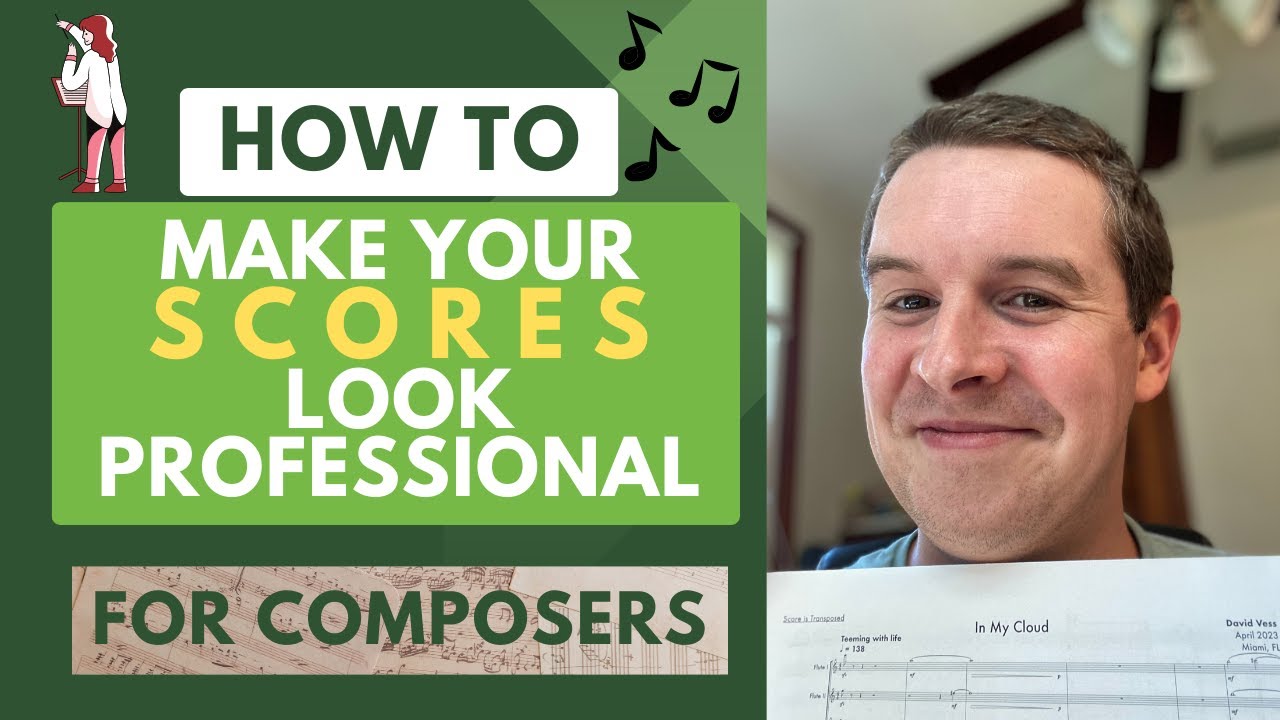Paper Size
- For Large ensemble Works, use Tabloid (US Paper Size).
- Letter is really more for Chamber Scores and Parts.
- Publishers will use different sizes, but for your average composer who is printing on their own, tabloid is the way to go.
Title Page
- Make it nice for a good impression on conductors and music directors
Info Page Should include the following:
- Instrumentation
- Duration
- Notes to Performers
- Symbol Key
- Program Notes
- Bio and Your Website Information
- Related Works (Optional)
- Program Notes (Yes they can really suck, but you should write them then!)
Transposition
- Indicate whether your score is Transposed, especially if you aren’t using a Key Signature
- Generally, Transposed Scores are more common, but some conductors prefer Scores in C.
- If you can, ask them, and if you can’t assume Transposed. Do not skip this small step, it is crucial.
Score Order
- Always in score order for large ensemble scores.
- The only exception is in Chamber Music, where unusual combinations of instruments can occur. Chose what makes sense.
Tempos
- Don’t miss the opportunity of telling your players how to play/characterize the music.
- It is easy to write Quarter equals 120 and leave it at that. Give them more, a word, a direction. It doesn’t have to be much.
Time Signatures
- If in Film World, use Gigantic Time Signatures.
- For Wind Ensemble and Orchestra in Concert World, Huge Time signatures are preferred.
- In Choral and Chamber Scores, the standard size is fine.
- General rule of thumb, if conducted go with Huge, if not, standard is fine.
Measure Numbers
- In any large ensemble score, you should have every single Measure number written out.
- For Choral and Chamber, it depends. Chose whichever keeps the score clear and not cluttered.
General Formatting
- Use 6-8 Bars per page, especially in large ensemble scores. Let it breathe.
- For conductors, don’t hide staves, keep the layout the same.
- In Film World, remove measure rests so that the score can be written on in the event of an on-the-fly reorchestration.
Section Checks
- Check Commands for the Strings. Arco to Pizza, Pont. To Ord. Etc.
- For Percussion and Woodwinds, double check the time you have given people to change instruments.
- For Brass, check your mute changes.
Dynamics
- Watch out for Orphaned Dynamics across the score.
- Be as clear and accurate as possible when using dynamics and give clear destinations.
Lastly, Get a Friend to look it over if possible. Ideally you can print it and go over it
SOURCE: https://www.davidvessmusic.com/post/how-to-make-your-scores-look-professional
You must log in or register to comment.


